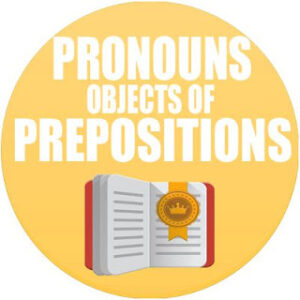Month: July 2020
-

Hacer Time Expressions in Spanish
How Do You Use Hacer Time Expressions in Spanish? Learn how to use hacer time expressions in Spanish. Note: The verb “hacer” can be used in a number of ways to indicate the length of time an action has been taking place. The first way uses the formula: Hace + time + que + Present tense form…
-

Me Gusta in Spanish
Me Gusta in Spanish Translation Learn how to use me gusta in Spanish. The verb “gustar” requires use of the indirect object pronouns. Note: The only forms of “gustar” you will use are “gusta” and “gustan” e.g. Me gusta la fresa. I like the strawberry Te gusta el programa. You like the program. Nos gusta el color azul. We…
-

Direct and Indirect Object in Spanish
How to Use the Spanish Direct and Indirect Object Pronouns Together? Learn how to use direct and indirect object in Spanish. Here are the direct object pronouns and the indirect object pronouns Direct Object Pronouns/ Indirect Object Pronouns/ English Equivalent me/ me/ me te/ te/ you (familiar) lo, la/ le/ him, her, it, you (formal) nos/ nos/ us os/ os/ you-all (informal) los, las/ les/ them, you-all (formal) Note:…
-

Spanish Indirect Object Pronouns
What are the Spanish Indirect Object Pronouns? Learn how to use the Spanish indirect object pronouns. The indirect object tells us where the direct object is going. Indirect object pronouns 1 The indirect object answers the question “to whom?” or “for whom” the action of the verb is performed. When a pronoun takes the place…
-

Direct Object Pronouns Spanish
What are the direct object pronouns in Spanish? Learn how to use the direct object pronouns in Spanish. The object that directly receives the action of the verb is called the direct object. The direct object can also be a person. Direct object pronouns in Spanish 1 The direct object answers the question “what?” or “whom?”…
-

Spanish Prepositional Pronouns
What are Spanish prepositional pronouns? Learn how to use Spanish Prepositional Pronouns. A pronoun is a word that is used instead of the name of a person or thing. When the pronoun acts as the object of a preposition, a different set of pronouns is used. Subject – Obj. Prep. Pronouns Yo (I) – mí Tú (You)(Informal) – ti Él/Ella(He/She)…
-
Inequality, equality and superlatives in Spanish
Inequality, equality and superlatives | Rules Read about inequality, equality and superlatives in Spanish. Learn to apply Spanish grammar rules with online lessons. Learn more about helpful tips on how to improve your language. Note: Inequality is expressed by using one of the following formula: más (menos) + adjective + quemás (menos) + adverb +…
-

Ir a, Acabar de, Volver a + Infinitive in Spanish
Ir a, Acabar de, Volver a | Rules How do you use Acabar de infinitive? Read about how to use ir a, acabar de, volver a in Spanish. Learn to apply Spanish grammar rules with online lessons. Learn more about helpful tips on how to improve your language. Many useful expressions are formed by combining…
-

Irregular Verbs in Spanish: Estar, Ir, Dar
Irregular Verbs in Spanish Read about how to use the irregular verbs in Spanish. Learn to apply Spanish grammar rules with online lessons. Learn more about helpful tips on how to improve your language. Note: Notice that “ir” and “dar” follow the same pattern as “estar”; they are irregular in the first person singular (yo).…
-

Stem Changing Verbs Spanish
What are the types of stem changing verbs? Stem Changing Verbs: OU:E Remember, there are three types of infinitives: -ar, -er, -ir. Infinitives are made up of two parts: the ending and the stem. hablar – habl (stem) + ar (ending) comer – com (stem) + er (ending) vivir – viv (stem) + ir (ending) With regular verbs, the stem…
-

Al and Del in Spanish – Contractions
When to use al and del in Spanish? Let’s find out when to use the contractions al and del in Spanish. Note: When “a” or “de” precedes the definite article “el”, the two words combine to form a contraction. a + el = al de + el = del e.g. Vamos al estadio – Vamos…
-

What is A in Spanish?
This article will tell you what is A in Spanish. A is a word in Spanish, a letter of the alphabet and a preposition. When to use A in Spanish? Note: In Spanish, when the direct object is a person, it is preceded by the preposition “a”. Tip: This word has no English translation. e.g.…
